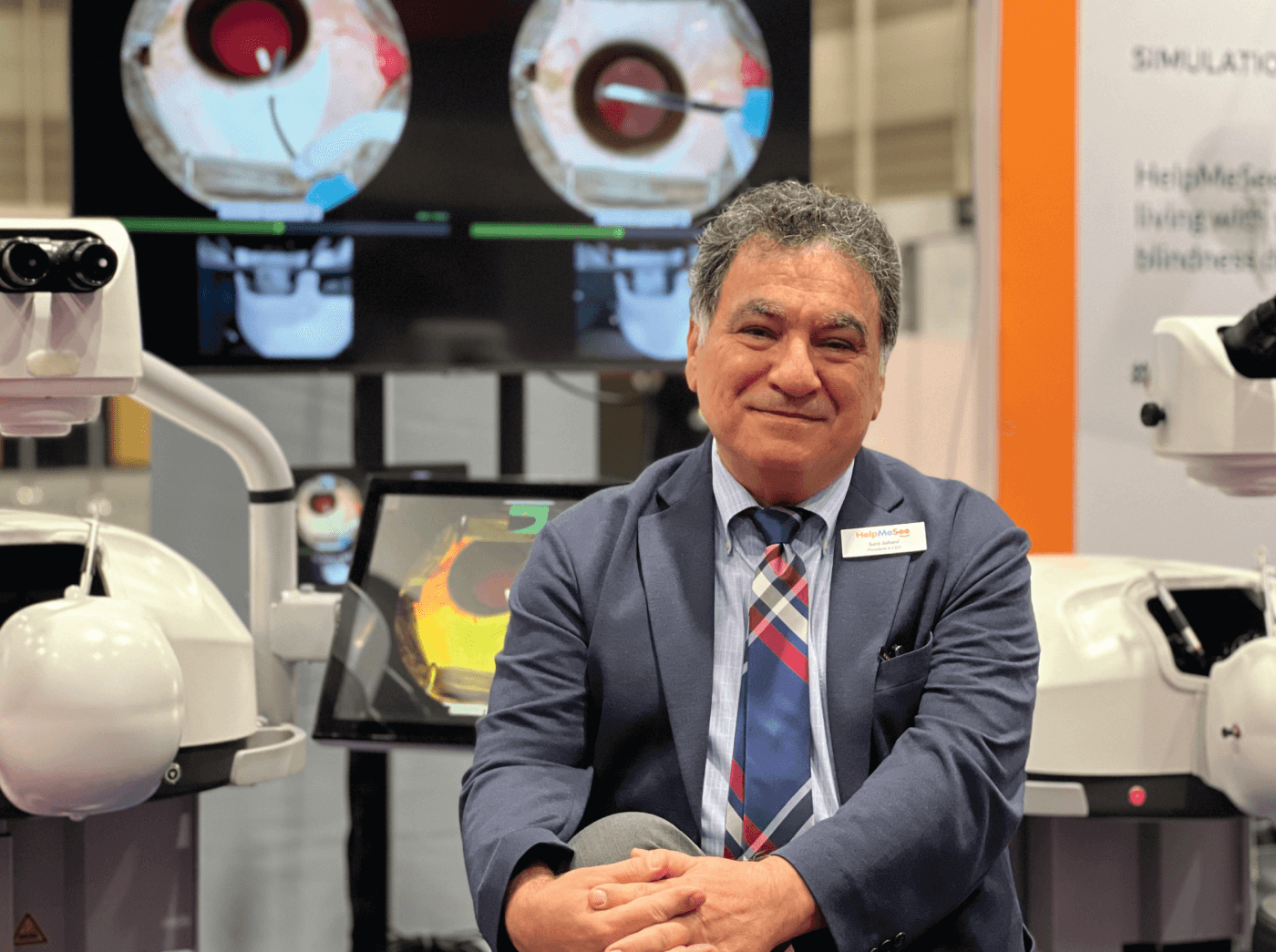
How did you get to your position at HelpMeSee?
I was raised in Sweden, where I studied electrophysics. After graduating, I entered the technology and finance industry, which eventually took me to the USA. There, I made a career leading Technology and Innovation departments in financial institutions, including Sungard Trading, Lehman Brothers, and the National Stock Exchange.
By 2019, however, I had come to recognize that the needs of the blind were greater than those of Wall Street, so I walked away from my financial career to join HelpMeSee; I’d fallen in love with the organization’s mission. I’ve been with it ever since, first as the Head of Global Innovation and Technology, and now as the President and CEO. I truly believe it’s the right place for me.
What is the HelpMeSee mission?
Cataract-associated blindness is a humanitarian crisis of global scale: it affects 100 million people, impacts the quality of life for entire families, accelerates poverty, and causes annual economic productivity losses estimated at $410 billion, according to the Lancet Global Health Commission on Global Eye Health. All this could be avoided – if only we had enough cataract surgeons. Our mission is to help eliminate the crisis by training large numbers of MSICS cataract specialists in developing regions.
What kind of skills do these specialists need?
We can’t rely on expensive, sophisticated technology such as phacoemulsification – it is just not feasible for developing countries. We train our cataract specialists in manual small incision cataract surgery (MSICS) procedure. This permits low-cost, effective, rapid interventions, estimated at $100 per surgery. A single clinic can perform hundreds of MSICS procedures per day – which means that 30,000 new surgeons could help eradicate blindness due to cataract and visual impairment! That’s the aim. But, this endeavor requires the creation of a cataract treatment ecosystem that is sustained over time – because new cataract patients appear continually, and always will.
How do you train novice surgeons?
By employing transformational innovation! We developed a purpose-made, virtual reality surgical simulator which allows us to provide MSICS training and instructor led-curriculum without ever putting a real patient at risk. The virtual reality microscope displays the entire anatomy of the eye, using extraordinary visuals and graphics, so trainees see exactly what cataract surgeons see in real life surgery. Furthermore, the simulator’s advanced haptic feedback system allows them to literally get a feel for the MSICS technique!
The MSICS simulator training is preceded with our eBook, which contains thousands of pages of learning material including videos, animations, and text. This is a key resource. We have made the eBook available for purchase in the USA, EU and the UK, and will soon offer it in other regions. The idea is for people to link their eBook purchase to a donation, thereby allowing an eBook to be given to a cataract specialist in the developing world. By rolling out the eBook in this way, we hope to give everyone the opportunity to participate in the struggle against cataract-associated blindness. This is about inclusion!
Any final thoughts?
Eradicating cataract–associated blindness will be extremely difficult; it requires a global effort backed by government-level support. This won’t happen unless people understand that there is not only a problem but also a solution – namely, an extra 30,000 cataract surgeons. But at present, HelpMeSee trains less than a thousand cataract specialists per year; we need to scale up dramatically, and that requires broad support and sponsorship. HelpMeSee will always provide the best, most innovative training technology, but to succeed in our mission we need commitment from other organizations and governments. Vision is a human right, and we must all work together to ensure that this right is not taken from the world’s poorest people.
